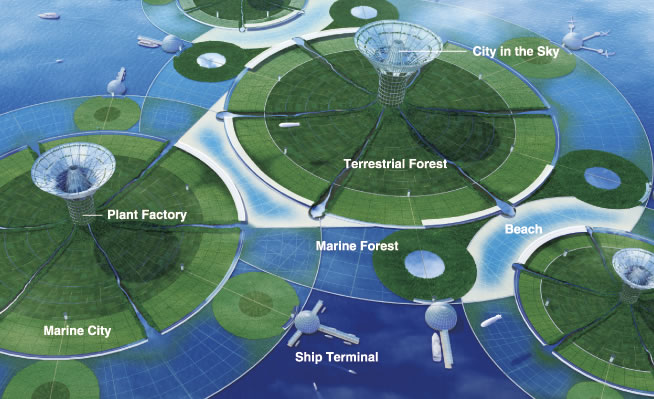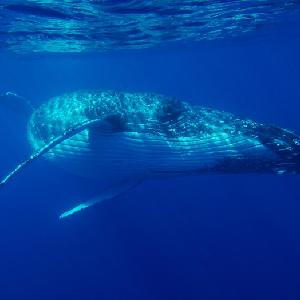Pitch
The Integrated Water, Energy, Nutrient Nexus (iWENN) Mngmt Protocol Applies Systems Design/Mngmt Principles to Global Scale AGW Adaptation.
Description
Summary
The National Climate Assessment, Chapter 28: Adaptation:
1) New approaches and strategies:
2) Identifying synergies and mainstreaming adaptation:
3) Financing and partnerships:
4) Communication, education, participation and awareness:
5) Fostering collective decision-making:
6) Paying attention to the robustness of proposed adaptation interventions:
In Alexander Gillespie's remarkably comprehensive work Conservation, Biodiversity and International Law, as well as other works found in the New Horizons in Environmental and Energy Law series, we find knowledge which is critical to planing any large scale solutions to the wide spectrum of goals set out in the United Nation's Anticipate, Absorb, Reshape initiative. Synthesizing the totality of the available knowledge on the vast number of subjects/factors is, however, challenging. The issue of setting priorities is even more challenging.
Where is the entry point for achieving a globally unifying on-the ground effort? Well, it may not be actually found 'on-the-ground'!
This proposal offers a vision which is marine centric as the marine space offers the least complex technical-regulatory starting point as well as being potentially the most effective at the socio-environmental and profit levels.
It is proposed that:
1) The deployment of large scale off-shore human cities to act as on-going Oceanic Resources Conservation and Adaptation (ORCA) cities which can mass produce critical marine derived (blue) carbon negative commodities for the global market while working to maximize environmental services and biodiversity found in our coastal regions, great seas and high seas.
2) Using a portion of the ORCA derived C-neg commodities profits as a means to reduce the UN refugee costs as well as use the ORCA cities as refugee habitat:
3) Establish internationally recognized ORCA colonies, with their own EEZs, to provide legally protected regions for ocean conservation.

www.shimz.co.jp also see Fish aggregating device
Category of the action
Mitigation/Adaptation, Changing public attitudes about climate change
What actions do you propose?

Executive Director, Achim Steiner, introduces UNEP’s Blue Carbon Initiative
Newly Approved: Global Methodology for Tidal Wetland and Seagrass Restoration:
"A new methodology to encourage coastal restoration across the globe has been approved by the Verified Carbon Standard (VCS). The Methodology for Tidal Wetland and Seagrass Restoration (VM0033) is the first globally applicable greenhouse gas accounting methodology for coastal wetland restoration, and will allow salt marsh, seagrass, mangrove, and other tidal wetland restoration projects to earn carbon credits."
Fish Carbon: Exploring Marine Vertebrate Carbon Services:
"Fish Carbon provides a direct channel through which governments and the private sector can meet national, regional and global commitments on climate change and sustainability. The recognition and valuation of marine vertebrate carbon services may support policies to improve oceanic carbon function, thereby helping to mitigate climate change, and to improve marine ecosystem management."
"Although many advances have been made in the last few years, there are still many challenges associated with unlocking the values of coastal carbon and ecosystem services; and then turning them into revenue and management options. The science still contains many gaps, there are very few ‘proof of concept’ on-the-ground examples around the world, and the international community still does not fully recognize the value of these systems for climate change mitigation or adaptation.
The Blue Forests Project aims to address these challenges through coordinated on-the-ground demonstrations where better coastal ecosystem management is achieved by harnessing the values associated with carbon and ecosystem services, addressing key knowledge gaps, and providing experience and tools for greater global application. This four year project is an initiative of the United Nations Environment Programme (UNEP), funded by the Global Environment Facility (GEF) and co-financed by project partners, and managed by GRID-Arendal, a Norwegian foundation and center collaborating with UNEP."
Engineered approaches to blue carbon:
"A US Department of Energy study from 2001 proposed to replicate a natural process of carbon sequestration in the ocean by combining water rich in CO2 gas with carbonate[CO3-] to produce a bicarbonate [HCO3-] slurry. Practically, the engineered process could involve hydrating the CO2 from power plant flue gas and running it through a porous bed of limestone to ‘fix’ the carbon in a saturated bicarbonate solution. This solution could then be deposited at sea to sink in the deep ocean. The cost of this process, from capture to ocean burial, was estimated to range between $90 to $180 per tonne of CO2 and was highly dependent on the distance required to transport limestone, seawater, and the resulting bicarbonate solution.
Expected benefits from bicarbonate production over direct CO2 gas injection would be a significantly lesser increase in ocean acidity and a longer timescale for burial before the captured carbon would be released back to the atmosphere.[43]"
"Finding the adequate financial support to set up a coastal carbon project or program is not an undemanding task. However, reports like this one, or other tools and resources, are trying to ease the way through the climate finance jungle. Wetland –coastal or other – conservation and restoration efforts are more important than ever, and climate finance can help materialize some real implementation on the ground. Climate change finance, additionally coupled and leveraged through biodiversity finance, offers a suite of funding, as well as a plethora of financial mechanisms to support the conservation and restoration of wetlands worldwide, yet is not easy to get hold off. This report tried to provide the reader interested in coastal carbon activities with a first overview of the types of finance available. The scope and scale as well as the geographical and political situation will determine which mechanism, or which A final word 8 A final word combination of mechanisms, is accessible for the development and implementation of a particular wetland carbon project or program. The stated literature and reading sources provide further insights and details for the reader to engage much deeper with a specific fund and/or financial mechanism. And as a final note, it has to be borne in mind that financing for climate change, biodiversity, and water resources will remain a quickly changing subject matter for quite some years to come; and, therefore, checking the information against the latest on the provided websites is a wise approach."
Project Title: Standardized Methodologies for Carbon Accounting and Ecosystem Services Valuation of Blue Forests: "To develop methodologies for carbon accounting and ecosystem services valuation in blue forests to be recognized and used by the international community and the GEF."
REQUEST FOR CEO ENDORSEMENT PROJECT TYPE: Full-sized Project TYPE OF TRUST FUND:GEF Trust Fund
The below is accredited to: http://www.ne.jp/asahi/mh/u/HoriCNES_ES.pdf
Who will take these actions?
Where will these actions be taken?
What are other key benefits?
11 - 20 JULY 2016, NEW YORK | MINISTERIAL DAYS FROM 18 - 20 JULY
The High-level Political Forum on Sustainable Development is United Nations central platform for the follow-up and review of the 2030 Agenda for Sustainable Development and the Sustainable Development Goals, adopted at the United Nations Sustainable Development Summit on 25 September 2015.
The Forum, which adopts a Ministerial Declaration, is expected to start effectively delivering on its mandates to provide political leadership, guidance and recommendations on the 2030 Agenda's implementation and follow-up; keep track of progress; spur coherent policies informed by evidence, science and country experiences; as well as address new and emerging issues.
HUMAN RIGHTS & THE OCEAN SLAVERY AND THE SHRIMP ON YOUR PLATE:
What are the proposal’s costs?
Time line
Related proposals
UN Oceanic Resources Conservation and Adaptation Platforms (O.R.C.A. Cities)
Algae Derived Ethylene Produces HDPE Algal Bioreactors: Repeat If Necessary!
Ocean Farming Hydrogen and Hydrogen Fueled Aircraft
References
The link address is: http://bluecarbonportal.org/
![]() Coastal habitats have the capacity to sequester 50 times more carbon per year in the sediment below them than equivalent sized tropical forests Carbon Markets North America 2009
Coastal habitats have the capacity to sequester 50 times more carbon per year in the sediment below them than equivalent sized tropical forests Carbon Markets North America 2009
![]() Stunning Peatlands Amplifying Feedback
Stunning Peatlands Amplifying Feedback
![]() World Bank Report Calls for Coastal Wetlands Protection
World Bank Report Calls for Coastal Wetlands Protection
![]() Degraded coastal wetlands contribute to climate change
Degraded coastal wetlands contribute to climate change
The Pew Charitable Trusts launched a groundbreaking technology platform that will help authorities monitor, detect, and respond to illicit fishing activity across the world’s oceans. Project Eyes on the Seas combines satellite monitoring of the oceans with other information, such as fishing-vessel databases and oceanographic data, to help authorities detect suspicious fishing activity far more efficiently than has been possible in the past— often in near-real time.
10 Innovations Poised to Change Sustainable Industries
Imagine a country of 125 million people, the eleventh most populous nation in the world.1 This is like no other country we know: its citizens are without employment or shelter and do not have the means to feed themselves or provide for their loved ones. Too many of their women die giving birth and too few children are lucky enough to live until their 5th birthday. For those who do, especially girls, they do not attend school. They have been deprived of their dignity and live in insecurity. Above all, they are struggling to change their circumstances; they rely upon charity to survive. This is the number of people in the world who need humanitarian assistance, mostly as a result of conflicts but also because of natural disasters. In 2014, every day 42,500 people were displaced by violence and conflict,2 while 53,000 people per day were forced from their homes by natural disasters, 90 per cent of which were due to weather-related events.3 Today, with violent extremism and climate change those figures are certain to be even higher—as will the cost to respond.
